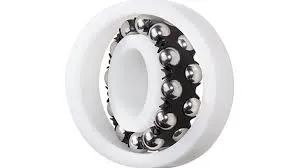
Dec . 03, 2024 16:32 Back to list
cylindrical roller bearing cage
The Role of the Cage in Cylindrical Roller Bearings
Cylindrical roller bearings are essential components in a multitude of machinery, ranging from automotive transmissions to industrial equipment. Among their various components, the cage—or retainer—plays a crucial role in maintaining the functionality and performance of these bearings. This article provides an overview of cylindrical roller bearing cages, their functions, materials used, and maintenance considerations.
Understanding the Structure
Cylindrical roller bearings consist of inner and outer rings, cylindrical rollers, and the cage. The cage separates the roller elements and holds them in place, allowing for controlled movement. This structure minimizes direct roller-to-roller contact and enhances the bearing's overall efficiency and longevity. The design of the cage can also affect the bearing's load capacity and speed levels, making it a critical consideration for engineers when selecting the appropriate bearing for specific applications.
Functions of the Cage
The primary functions of the cage in cylindrical roller bearings are as follows
1. Separation of Rollers By keeping the rollers spaced apart, the cage reduces friction and wear. This separation is vital for maintaining consistent performance and extending the service life of the bearing.
2. Guidance of Rollers The cage provides a guiding function for the rollers as they spin within the bearing. This guidance ensures uniform load distribution, which is essential for preventing premature failure due to uneven wear.
3. Minimizing Roller Contact The design of the cage minimizes the potential for contact between rollers, which can generate excessive heat and lead to damage.
4. Holding Lubrication In some designs, the cage can also help in retaining lubrication, ensuring that the rollers remain adequately lubricated throughout their operation. This is crucial in reducing friction and preventing overheating.
Materials Used for Cages
Cages for cylindrical roller bearings can be made from various materials, depending on the specific requirements of the application. The most commonly used materials include
cylindrical roller bearing cage

1. Steel Steel cages are robust and can withstand high loads and temperatures. They are commonly used in heavy-duty applications, providing excellent durability.
2. Polyamide (Nylon) These synthetic materials offer lightweight features and excellent corrosion resistance. They are often favored in applications where weight reduction is a priority or where the operating environment is more corrosive.
3. Brass Brass cages are known for their hardness and resistance to wear. They are commonly used in applications involving higher speeds.
4. Composite Materials Advances in technology have led to the use of composite materials that combine lightweight properties with durability. These materials can often provide superior performance in specific conditions.
Maintenance and Longevity
Regular maintenance is essential to ensure the longevity of cylindrical roller bearings. The cage design plays a significant role in this process. To maximize the bearing’s lifespan
- Monitor Lubrication Ensure that the lubricant used is appropriate for the working conditions. Insufficient lubrication can lead to increased wear, causing premature failure. - Inspect for Damage Regularly check the bearing for signs of wear or damage, particularly in the cage. Any signs of cracking or deformation may indicate that the bearing requires replacement.
- Keep Clean It is vital to keep the bearing assembly clean, as contaminants can lead to damage to the rollers and the cage.
- Avoid Overloading Ensure that the bearing is not subjected to loads beyond its specified limits, as this can deform the cage and lead to failure.
Conclusion
The cage in cylindrical roller bearings is an indispensable component that significantly influences the bearing's performance, durability, and efficiency. Understanding its role and the materials used is crucial for selecting the right bearings for various applications. With proper maintenance and monitoring, the performance of cylindrical roller bearings can be optimized, ensuring they meet the demanding requirements of modern machinery. As technology advances, the evolution of cage designs and materials will continue to enhance the reliability and efficiency of these vital components in a wide range of applications.
Latest news
-
Grooved Ball Bearing Design and Functionality
NewsJun.04,2025
-
Concrete Mixer Bearing Load Capacity Testing
NewsJun.04,2025
-
6004 Bearing Dimensions in Robotic Joint Designs
NewsJun.04,2025
-
Advantages of Single-Row Deep Groove Ball Bearings
NewsJun.04,2025
-
Applications of Deep Groove Ball Bearings in Automotive Systems
NewsJun.04,2025
-
Innovations in Bearing Pressing Machine Design
NewsJun.04,2025
